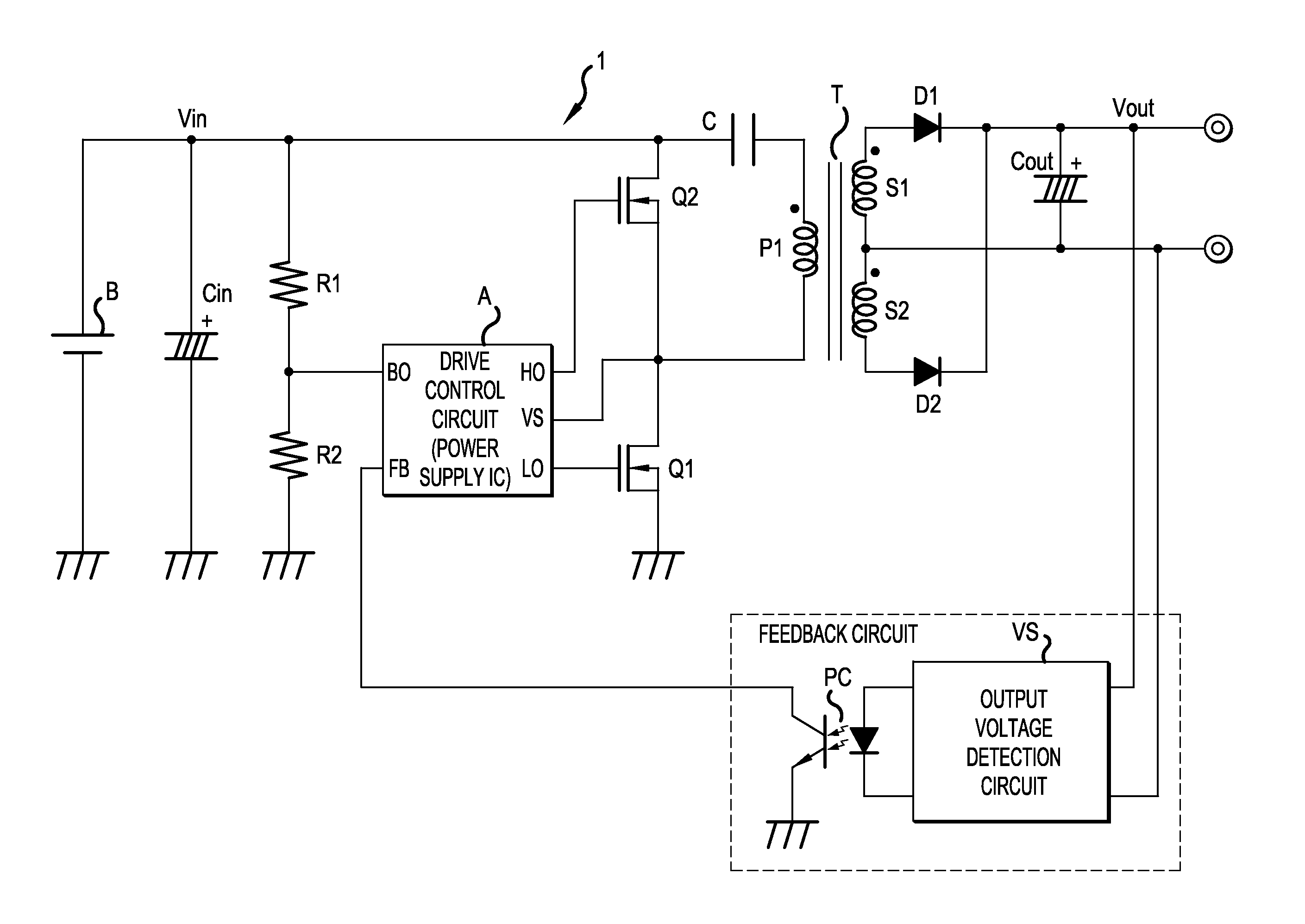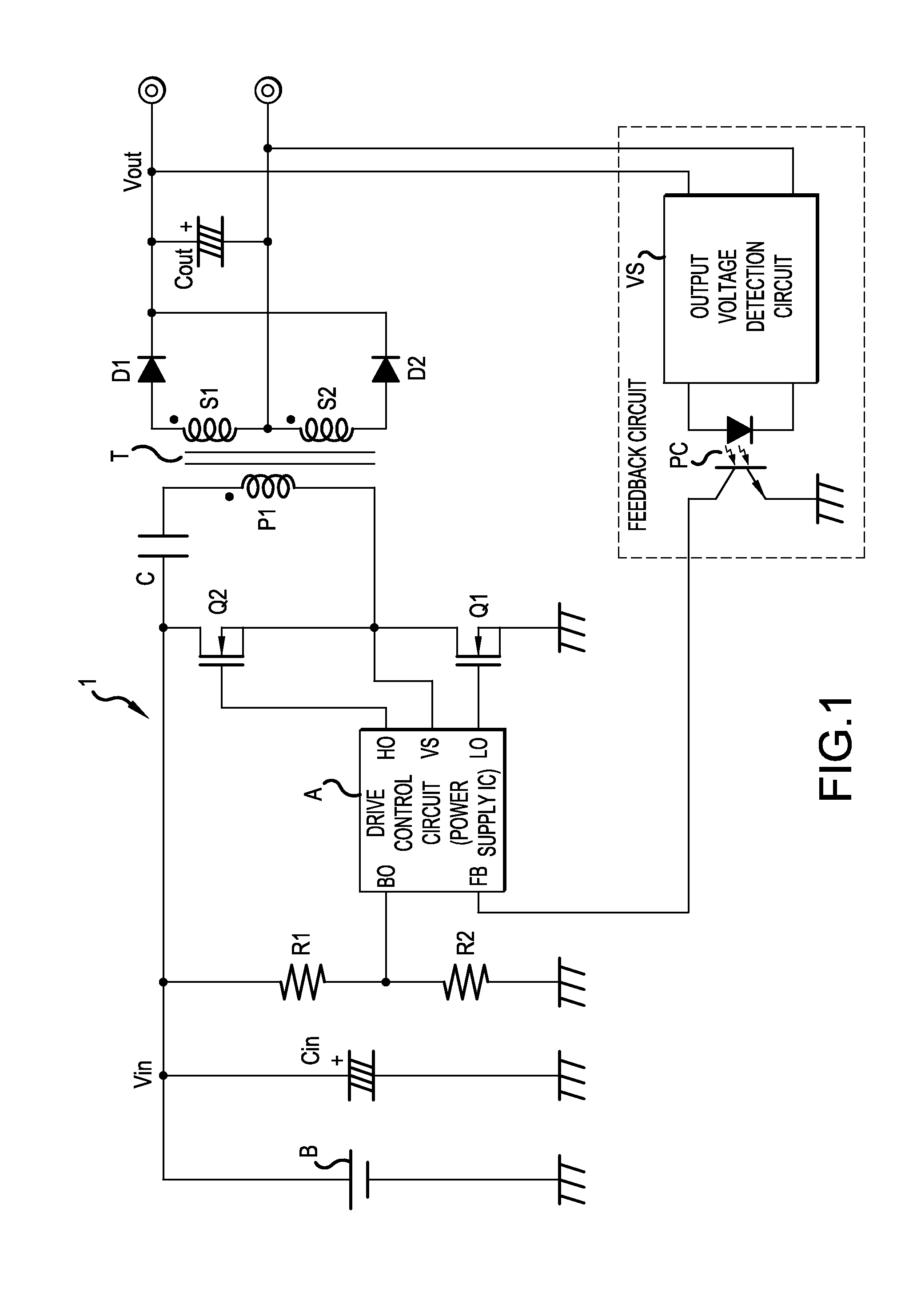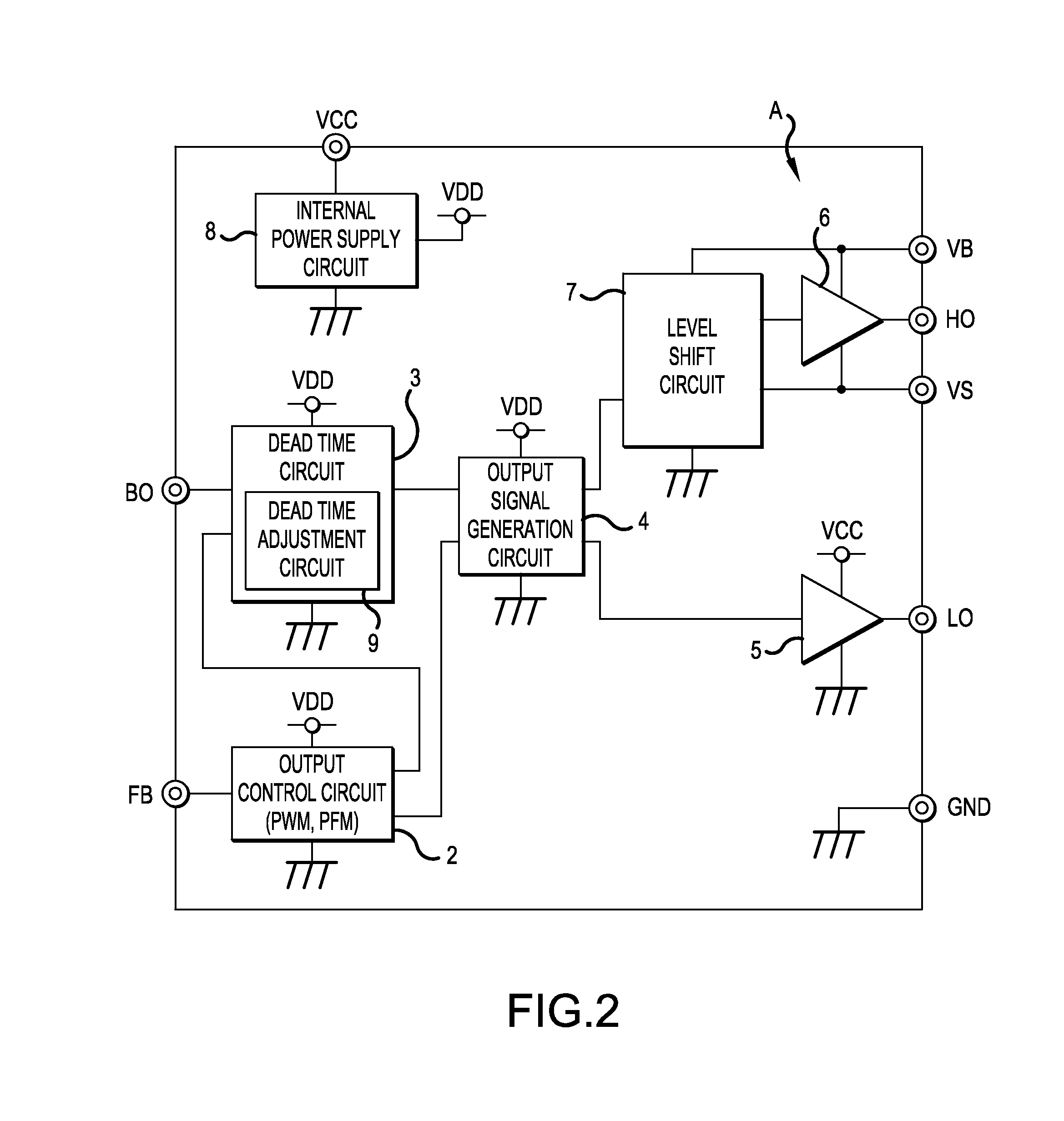Switching power supply apparatus
a power supply and power supply technology, applied in the direction of electric variable regulation, process and machine control, instruments, etc., can solve the problems of drop in power conversion efficiency, etc., to prevent the drop in conversion efficiency, increase the invalid time of power conversion, and zero voltage switching of the switching element
- Summary
- Abstract
- Description
- Claims
- Application Information
AI Technical Summary
Benefits of technology
Problems solved by technology
Method used
Image
Examples
embodiment 1
[0053]FIG. 1 is a schematic block diagram of a switching power supply apparatus 1 constructing a resonance type converter of the present invention. In FIG. 1, a composing element the same as the above mentioned conventional switching power supply apparatus 1 shown in FIG. 11 is denoted with a same reference symbol. Redundant description on the configuration of a composing element the same as the conventional apparatus and the functions thereof is therefore omitted.
[0054]A characteristic of the switching power supply apparatus 1 according to Embodiment 1 is that input voltage Vin is divided and detected using the voltage dividing resistors R1 and R2, and this detected input voltage Vin is inputted to the drive control circuit A as a BO voltage. Another characteristic is that in the drive control circuit A, the pulse width Tdt of the dead time signal generated by the dead time circuit 3 is adjusted based on the BO voltage.
[0055]In other words, a dead time adjustment circuit 9 is disp...
embodiment 2
[0064]FIG. 6 is a schematic block diagram of a drive control circuit A of a switching power supply apparatus , which is configured to adjust the pulse width Tdt of the dead time signal in accordance with the change of the FB voltage. In the drive control circuit A, a dead time adjustment circuit 9a is disposed as an attachment to the dead time circuit 3. In the dead time adjustment circuit 9a, the pulse width Tdt of the dead time signal generated by the dead time circuit 3 is adjusted in accordance with the change of the FB voltage. In FIG. 6 as well, a same composing element as the above mentioned drive control circuit A shown in FIG. 12 is denoted with a same reference symbol, and redundant description on the same composing element is omitted.
[0065]Specifically, the dead time circuit 3 and the dead time adjustment circuit 9a are configured as shown in FIG. 7, for example. Just like the dead time adjustment circuit 9 shown in FIG. 3, the dead time adjustment circuit 9a includes: a ...
embodiment 3
[0073]FIG. 10 is a schematic block diagram of a switching power supply apparatus of the present invention, and the switching power supply apparatus is constructed by a synchronous rectification boost converter. The synchronous rectification boost converter includes: a first switching element Q1 that is connected to a DC voltage source B via an inductor L, and stores power in the inductor L when the switching element Q1 is turned ON; and a second switching element Q2 that turns ON when the first switching element Q1 is OFF, and transfers the power stored in the inductor L to the output capacitor Cout using resonance of the inductor L, so as to obtain the output voltage Vout.
[0074]The first and second switching elements Q1 and Q2 are alternately turned ON / OFF by the drive control circuit A, just like Embodiments 1 and 2 described above. The synchronous rectification boost converter shown in FIG. 10 is configured such that the output voltage Vout is divided and detected via the voltag...
PUM
 Login to View More
Login to View More Abstract
Description
Claims
Application Information
 Login to View More
Login to View More - R&D
- Intellectual Property
- Life Sciences
- Materials
- Tech Scout
- Unparalleled Data Quality
- Higher Quality Content
- 60% Fewer Hallucinations
Browse by: Latest US Patents, China's latest patents, Technical Efficacy Thesaurus, Application Domain, Technology Topic, Popular Technical Reports.
© 2025 PatSnap. All rights reserved.Legal|Privacy policy|Modern Slavery Act Transparency Statement|Sitemap|About US| Contact US: help@patsnap.com



